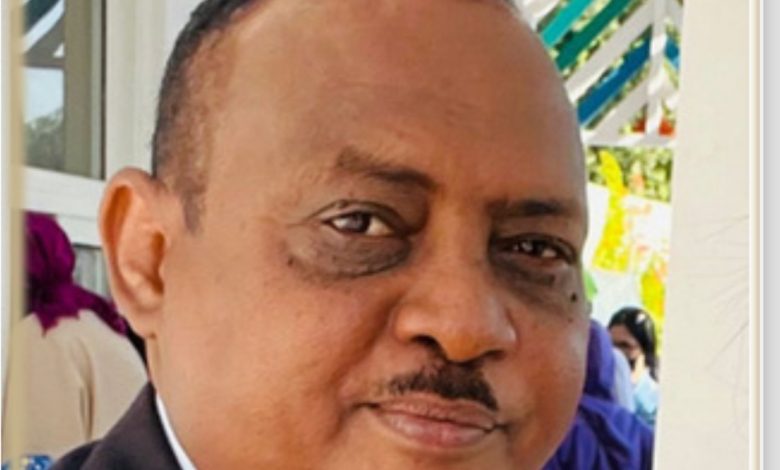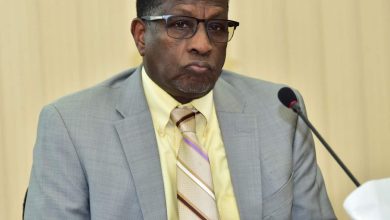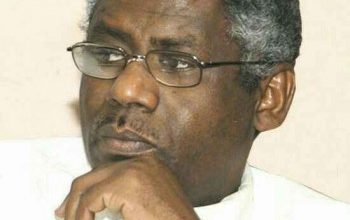Rapid Support Forces and brutality strategy 2-2

By: Major General (R) Dr. Adil Hassan
ISIS’ strategic transformation:
ith the collapse of the empowerment strategy adopted by ISIS following the fall of the so-called ISIS caliphate from Mosul in 2017, there was a need to focus on the concept of the inevitability of a clash by following three basic tactics:
The first: intensifying the rate of terrorist operations while selecting new targets and areas to carry out operations.
Second: Media activity through the repeated appearance of the official spokesman for ISIS, Abu Hamza Al-Qurashi, with the aim of promoting allegations about the organization’s cohesion on the one hand, and mobilizing fighters, whether in the center or its various branches, on the other hand.
Third: Announcing a new strategy different from the old strategy (management and empowerment of brutality).
Through it, ISIS is trying to outline the features of the new phase in terms of combat and operational tactics, and the nature of the goals under the name of the strategy (appearance and disappearance), which depends on the surprise operation that is based on limited scope and wide influence, and the primitiveness of the tactics and weapons used and turning them into retaliatory or show operations after they had expansionary goals. Through these three tactics, since the first half of 2021, ISIS has adopted three basic territories for its presence and implementation of its operations:
The African Sahel region, which starts from the focal point in southwestern Libya, passing through Chad, Niger, northern Nigeria, northern Burkina Faso and Mali, all the way to the Atlantic Ocean, which is what the organization called (ISIS West Africa), which is considered one of the most important areas of the organization’s bases, and the most active in terms of numbers of terrorist operations and membership.
The Central African region extending from the Congo through Mozambique until it reaches Tanzania. This region is considered the hub and center of ISIS operations for all of Africa. It also seeks to expand this region towards Somalia and Kenya until it reaches the Indian Ocean.
The Asian region. The organization has recently focused its operations on the Asian region. Its operations in India have targeted security and police personnel, in addition to carrying out other operations in Afghanistan and Pakistan and spreading in the regions of Central Asia. The organization in this region sought to achieve the following:
Weakening its competitors, especially Al-Qaeda, working to dismantle Al-Qaeda and seizing its human, military and logistical capabilities. This also happened when the group of Abubakar Shekau, leader of Boko Haram, announced his joining ISIS. In other words, ISIS is trying to seize the leadership of terrorist movements, especially Al-Qaeda, which is considered its strongest competitor in Africa, and annex it to it.
Messages to the resistance forces: Seeking to re-establish ISIS outposts and axes, extending to sending messages to those concerned with the war against terrorism (the coalition). Despite the strikes and defeats that ISIS has suffered, it still has the ability to strengthen its presence and superiority in various regions.
Seeking expansion and regaining influence: ISIS is trying to promote that it has carried out an emergency withdrawal from its old areas of influence and adopted a new deployment strategy while attracting large numbers of loyalists and fighters in non-Arab countries, especially among Muslim minorities in some African and Asian countries.
Reducing pressures on the centralization of the organization and its leadership: ensuring the intensification of terrorist operations in various parts of the world, especially in Africa, and avoiding the pressures it faces in Iraq, Syria, and finally Libya and South Sinai from the forces of the international coalition to combat terrorism.
Working to attract new elements to the organization, especially in light of the decline in the organizational and operational experience during the recent period after the most important military and organizational leaders and competencies were killed.
The strategy of transformation in the three regions was the result of the effectiveness of the international campaign that targeted the organization in its main countries, especially Russia and Libya, which led to the organization’s alignment, especially after the loss of its leader, Abu Bakr Al-Baghdadi.
The development of ISIS’s brutal operations:
On March 10, 2014, the sounds of explosions were heard coming from the old city on the western bank of the Tigris River, which divides Mosul into two sides, after which the attacking armed groups, consisting of Iraqis and foreigners, took control of the city. They told the citizens that they had come with the aim of getting rid of the Iraqi army and providing them with assistance. The next day, the gunmen crossed the river and took over the remaining part of the city. The army and police forces, who greatly outnumbered the attackers, were unable to stop and confront them, so they fled, leaving their military clothes and joining the city’s adult population. They number about two million people, and the organization announced itself as the Islamic State in Iraq and the Levant (ISIS), and its members set out across the desert from eastern Syria. Abundant spoils were waiting for him. The Iraqi army, which the Americans had rebuilt, trained and equipped after the US-led invasion of Iraq in 2003, had abandoned large quantities of armor and advanced weapons, and the militias seized them. After they had this arsenal of weapons, they looted about $500 million from the Central Bank branch in Mosul.
With the collapse of the army in the entire northern region, the militias moved quickly across the Tigris Valley, and towns and villages fell one after another like dominoes, and not a day passed until the organization’s militants seized the town of Baiji, including the huge oil refinery, and then seized the ancient Sunni town of Tikrit, Muscat. Saddam Hussein’s head, and the Speicher base or camp in the Anbar region in western Iraq was besieged and the entire camp was captured. They took the Iraqi soldiers, most of whom were Shiites, in trucks away from the camp, and shot them. An estimated 1,700 people were killed in this cold-blooded massacre, and the search for mass graves is still ongoing. Instead of hiding its brutal crimes, the organization enjoyed posting videos and pictures on the Internet showing its brutal members in black taking Shiite prisoners and shooting them.
ISIS has expanded its operations to include large areas of northern Iraq that are inhabited and controlled by Kurds. He took the women of the Yazidi-majority city of Sinjar as captives and captives, as this minority was considered a group of heretics. Hundreds of them were killed, and the rest fled. Those who remained, women and children, were taken as prisoners of war until they were sold or bartered as movable goods, and the girls were used as slave girls for sexual pleasure. The organization broadcast a video clip showing the notorious beheading, Mohammed Emwazi, with a London accent, nicknamed “Jihadi John,” brutally killing American journalist James Foley.
In the following weeks, more American and British journalists and aid workers, including Steven Sotloff, David Haines, Alan Heinbach, and Peter Kassing, who had converted to Islam and changed his name to Abdul Rahman, appeared being slaughtered in similar, well-produced and directed video clips, which were not devoid of the organization’s promotional statements and horrific warnings.
Within a matter of months, ISIS, which was only a group, made its way to internationalism, adopting bombings here and there, and overnight it became the focus of the world’s attention, and it controls an area of 12 thousand square kilometers. The Australian Prime Minister at the time called it a new terror that befell the people and described the situation as medieval barbarism that committed crimes and expanded with the help of the latest technological means.
ISIS was interested in destroying cultural, archaeological and cultural centers, such as some of the most famous and popular sites, including the Temple of Bel and Baal Shamil in the city of Palmyra in Syria and the ancient cities of Hatra and Nimrud in Iraq. It also destroyed ancient churches, monasteries and Shiite mosques and removed inscriptions from them. The shrine of Imam Awn al-Din, whose structure dates back to the thirteenth century, and which withstood the Mongolian rebellion, was blown up.
Video clips of the organization showed that it was carrying out acts in the eyes of the world of acts of deliberate sabotage of cultural heritage, and these acts are the cultural equivalent of beheading aid workers. The Islamic State’s Muslim Treasury has issued written and paper permissions to plunder archaeological sites.
At checkpoints, the organization’s militants verify identity cards against a database stored on portable devices (laptops) that they obtained from government agencies or from employee records. Former members of the security forces were required to go to private mosques to declare “repentance” and surrender their weapons, and then receive a paper stating their pardon. They also prevented women from going out without a hijab, ordered men to grow a beard and wear shorts, banned cigarettes, shisha, music, and cafes, and banned watching television. They adopted a system of morality police that roam the streets in search of violators. They have established courts for their own law, which goes beyond basic human rights stipulated in religions and international conventions. One of the organization’s victims stated that one of its members killed my husband, raped me, and then took me as his wife.
After the organization’s fighters reached the outskirts of Erbil, the Kurdish capital, American forces prevented them from entering, then helped stop the genocide of the Yazidis. Ten days after the American raids on ISIS, James Foley was beheaded, in adherence to the approach of brutality, but the most horrific atrocity occurred a few months later, burning the pilot. Jordanian Moaz Al-Kasasiya, whose plane was shot down alive, as well as the execution of Al-Asri in Libya.
Since the declaration of the caliphate until the beginning of 2016, about 70 terrorist attacks were carried out by ISIS militants or its loyalists in 20 countries around the world, from California to Sydney, and the death toll was estimated at 1,200 victims. The attacks carried the same message of punishment, deterrence, and provocation by beheading hostages, demonstrating the extent of ISIS’ influence globally.
Among the atrocities committed by the organization was the downing of the Russian plane in Sinai in October 2015, and the organization adopted the method of suicide bombers to blow up various targets, such as Japanese kamikaze units in World War II.
After about 15,000 of its members were killed by air strikes launched by coalition forces, it was able to compensate for this loss from the Sunni population. While the organization succeeded in attracting large elements in Iraq, it was not able to do so in Syria, and its presence was concentrated only in the city of Raqqa. Then it moved to Libya, and after it was defeated, it moved to Africa and Asia.
Rapid Support Forces (RSF):
In 2003, following the beginning of the war in the Darfur region, the Sudanese Ministry of Defense established the Border Guard Forces, which is a militia composed of Darfurian Arabs, specifically those known as the “repentant” who were subjected to reports of murder and armed robbery and who received a comprehensive amnesty in exchange for fighting in the ranks of the army (Janjaweed). ). It was initially called the Border Guard Intelligence, and later it became the Border Guard within the framework of the Popular Defense Forces. The army’s need for fast-moving forces was to confront the unruly elements threatening the security of the region, as well as to confront the armed movements. However, the behavior of these elements became a threat to the security of the region through repeated attacks on citizens.
In 2013, there was a need to create a military force to support the army with the same tactics and method used by the armed movements in Darfur, South Kordofan, and Blue Nile. The National Security and Intelligence Service reshaped these forces under the name of the Rapid Support Forces (RSF), and they were retrained and armed in coordination with the Sudanese Armed Forces. Its first wars began in South Kordofan and then Darfur, and it was able to achieve major victories over the Revolutionary Front forces, thanks to the military experience it possessed, which clearly adjusted the military balance in favor of the government in Darfur. However, the undisciplined behavior and ambition of the leadership of these forces created some problems for the security and intelligence apparatus. National Authority, so its affiliation as an institution was assigned to the Presidency of the Republic, then a special law was issued for it in 2017 granting it the status of an independent security force. In 2019, the RSF participated in the overthrow of former President Omar al-Bashir by participating in implementing the decision of the security committee consisting of the army, police, security, and the RSF. The commander of the RSF, Mohamed Hamdan Dagalo (Hemedti), became Vice-President of the Sovereignty Council, and these forces were assigned the tasks of securing the capital and the sites. The strategy is there. After the dissolution of the forces of the Operations Authority of the Security Service, these forces were able to seize the headquarters of the Authority, its weapons, and all logistical and mobile aids.
When war was declared by Saudi Arabia and the UAE against the Houthis in Yemen, the RSF participated in that war, which allowed them to build a network of public relations, especially with the United Arab Emirates. They were also entrusted with securing the borders in the face of illegal immigration, terrorist elements, and drugs, so they were strengthened. The relationship with the European Union that led to the announcement of the (Khartoum Process), for which the RSF received great support.
After the conflict that broke out between the RSF Commander and the Awakening Commander, Musa Hilal, the RSF were able to control the most important gold mining areas, which allowed the RSF Command to obtain huge wealth, in addition to the great human and logistical support that the United Arab Emirates continued to provide to it.
With the growing military and economic centrality of the Rapid Support Forces (Hemedti), he began to have political ambitions that amounted to the intention of ruling all of Sudan. Therefore, he moved to gain loyalty in alliances between societal forces (tribal and clan leaders and Sufi orders), political parties and armed movements, and to attract leaders in the regular forces, including… His availability of money attracted many community, political and military leaders. There was growing ambition to rule Sudan, which created a kind of intense competition with the leadership of the armed forces, and an attempt to rebel against it in alliance with the framework group (which suggested that the RSF remain an independent force from the army for about ten years). The rivalry turned into a violent conflict with the outbreak of war on April 15, 2023, after it redeployed its forces, numbering more than one hundred thousand, and attempted to occupy Merowe Airport.
The brutality of the RSF and their violations of human rights and international humanitarian law:
A number of United Nations experts expressed concern about reports of the dire humanitarian situation in Sudan. Thousands of civilians were killed, millions were forcibly displaced from their homes, and nearly 700,000 refugees and asylum seekers were forced to flee to neighboring countries, displacing more than 4 million. In a press statement, they expressed particular concern about ongoing reports of widespread violations committed by the RSF, including reports of women and girls being subjected to enforced disappearance, forced labor, and sexual exploitation. They stressed that hundreds of women were detained by the RSF in humiliating and inappropriate humanitarian conditions. The press release noted that RSF members use rape and sexual violence as tools to punish and intimidate communities, and that some cases are motivated by racial and ethnic reasons. They pointed out the difficulty for local and international agencies and organizations to reach those affected and those eligible for international protection in order to provide them with protection and provide health care, relief and shelter services.
The US Treasury Department had imposed sanctions on the deputy of the RSF, Abdul Rahim Dagalo, due to violations in the Darfur region, especially West Darfur, which witnessed ethnic cleansing, genocide, and mass graves. The governor of West Darfur was also killed and his body brutally mutilated. The ministry said that the sanctions against Abdel Rahim Dagalo came due to his leadership of the RSF, which it described as an entity whose members participated in acts of violence and human rights violations, including massacres against civilians, brutal killings, and the use of sexual violence.
The Sudanese Public Prosecution report indicated that there are more than 500 reports of missing persons, including violations of enforced disappearance. The Unit for Combating Violence against Women and Children in Sudan revealed an increase in cases of forced disappearance of women in Nyala. Eyewitnesses reported that there were women and girls detained in warehouses and hotels in Nyala and Khartoum. The authorities are pursuing the RSF due to accusations of committing violations since the outbreak of the war, including occupying and burning citizens’ homes, stealing cars, and occupying buildings and health facilities and converting them into military barracks. It also destroyed state institutions, ministries, diplomatic missions, infrastructure, antiquities, and sources of electricity and water generation, looted banks, shops, factories, and companies, and deliberately bombed indiscriminately with the aim of intimidating and leaving homes to occupy and plunder them.
The Sudanese Group for Victims of Enforced Disappearance said that it registered 430 reports of missing persons during the war, and the police departments in the city of Wad Medani, which received thousands of people fleeing the war in Khartoum, received reports of the names of missing men, women and children.
The Sudanese police revealed that there were more than 32,000 reports against RSF in the period from June 1 to October 20, 2023 (missing persons: 113 reports, assault on persons: 40 reports, assault on money: 7,721 reports, and stolen cars: 23,761 reports).
The United Nations Human Rights Office said that it had received documented information regarding the burial of the bodies of at least 87 dead members of the Masalit tribe and other tribes by the RSF and militias loyal to them in West Darfur, and who were buried in a mass grave outside the city of El Geneina. The United Nations Human Rights spokeswoman said that interviews conducted with those fleeing from El Geneina to Adre in Chad revealed horrific incidents in which an Arab militia supported by the RSF killed those fleeing the city on foot.
There is information that forces from Boko Haram and ISIS from West Africa and Libya have joined the RSF with the aim of reaching safe places, obtaining weapons, money, training in modern weapons, and forming sleeper cells.
Conclusion:
As mentioned in the book Managing Savagery: Eliminating the Postcolonial State, the RSF put forward the idea of eliminating the 1956 state in Sudan.
The beginning of ISIS operations in Iraq was targeting the security forces, police, and army in Mosul and northern Iraq. The RSF sought to destroy the General Command of the Army, the Central Reserve, the Signal Corps, the Armored Corps, the Military Industrialization Building, the Intelligence Building, the Forensic Evidence Headquarters, the Police Headquarters, and the military, security, and police academies.
Targeting the Republican Palace, Rdio and Television, and 29 ministries and institutions buildings (the headquarters of the Ministry of Justice, the Nile Company, Petrodar, and the Specifications and Metrology Company).
ISIS adopted violence against individuals by beheading, burning, and killing people. The RSF Militia killed everyone who stood in its way, especially citizens defending their homes and those who refused to hand over their property and cars (Jamal Zamqan and a number of citizens who were randomly killed in El Geneina), and randomly bombarded neighborhoods in which entire families were martyred.
ISIS members robbed the Central Bank in Mosul. The RSF seized the Central Bank branch and commercial banks and looted money, savings, and gold.
The RSF destroyed and burned the Tadamon Towers, Al-Fayhaa, Afra Mall, the National Bank, 6 water stations, 93% of the electricity offices, and burned 9,000 electricity poles. It also destroyed 158 markets after they were looted, stealing and destroying 411 factories in Bahri and 231 factories in Khartoum. 220 pharmacies in Khartoum were looted and destroyed, 200 health institutions were out of service, more than 90% of citizens’ homes, and about 23,000 cars were stolen. A number of bridges were also affected by artillery shelling, road closures, and the freedom of movement of residents.
Torturing prisoners and mutilating corpses as ISIS does, in addition to carrying out field executions, smuggling weapons, recruiting children, targeting diplomatic headquarters of regional and international organizations, and not allowing the burial of the dead.
Burning cultural institutions and the National Museum and stealing its contents.
Trade in currency and damage to the national economy, causing the national currency to decline to its highest rate.
After the strikes faced by ISIS by the coalition forces in Iraq, Syria and Libya, they expanded and deployed in Africa and Asia, as well as after the painful strikes by the army to the RSF deployed in the states of Darfur, Kordofan and the White Nile targeting civilians.
The RSF burned research centers, the Documentation House, and the Sudanese House of Books, Lands, Judicial, Civil Registry, Radio, Television and Oil Library.
Conclusion:
The phenomenon of RSF terrorism will spread in all the western African region, threatening national and regional security, increasing illegal immigration rates and terrorism, threatening global security and damaging the strategic interests of the great powers. Therefore, an international strategy and alliance must be developed to eliminate this new terrorist phenomenon, support Sudan’s national capabilities, to include the RSF in the list of global terrorist organizations, and work to fight them away from the duplication of standards and selectivity.


